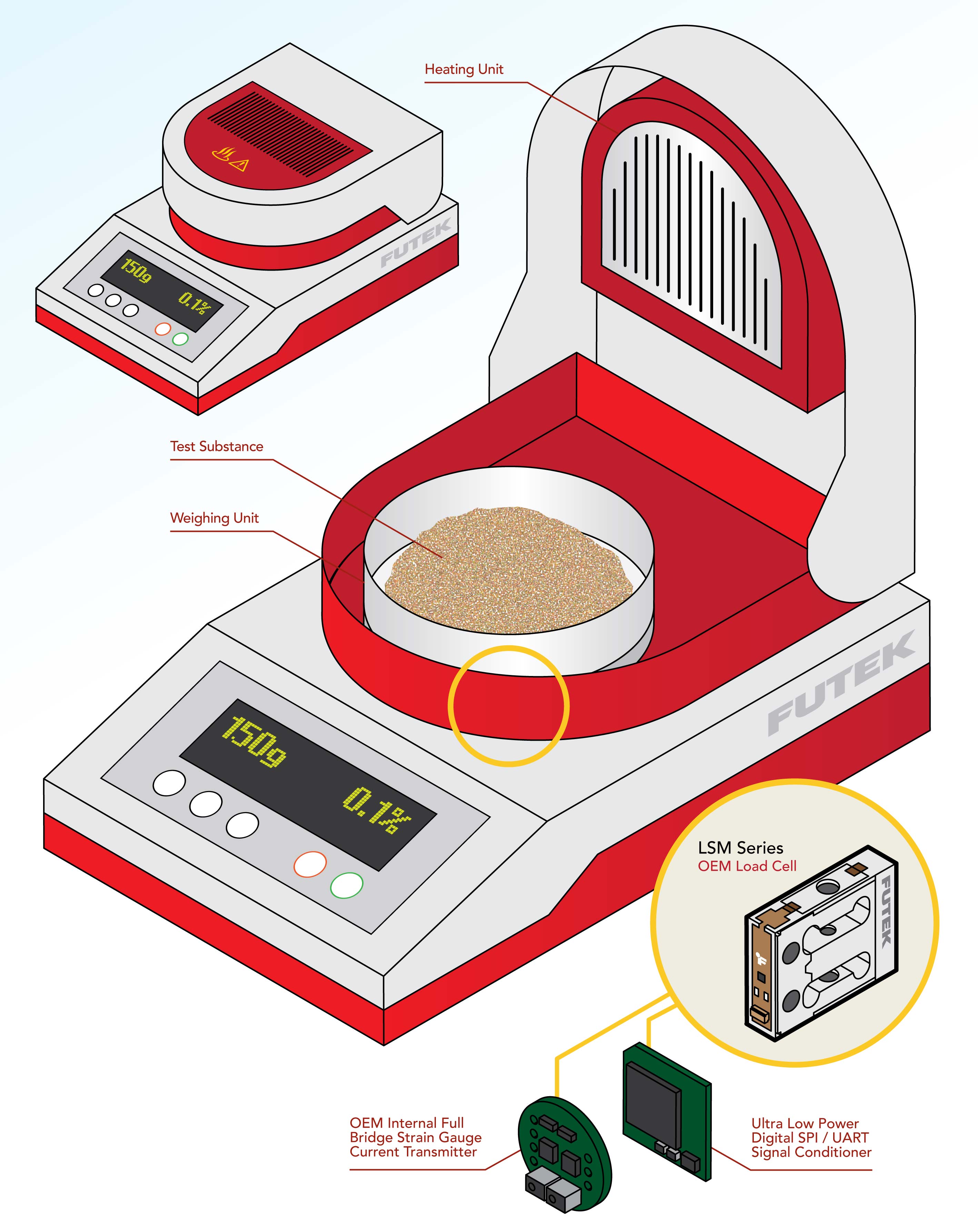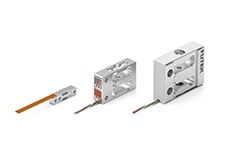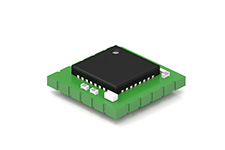What is Moisture Content Analysis and how do they work?
Moisture matters for assuring product quality to a lot of industries such as food processing, pharmaceuticals, cosmetics, agriculture, and more. Determining the amount of water or moisture present in a given substance or material, known as moisture content analysis, is a significant process to ensure quality control, research and development, and ensuring product consistency in numerous industries. A moisture analyzer is a sophisticated laboratory equipment designed to accurately determine the amount of water or moisture present in a sample substance.
The main components of a moisture analyzer include a heating unit, a weighing balance coupled with high-precision strain-gauge-based force sensors or load cells, temperature controls, and advanced moisture sensors.
Moisture analyzers use the thermogravimetric analysis (TGA) principle to assess the moisture levels in materials. The moisture content is measured by weight loss on drying. This method involves heating a sample at a given temperature and measuring weight loss until a moisture-free state is reached, which is directly proportional to the moisture content. The weight of the sample after drying is subtracted from the weight before, so the loss of moisture is determined using the loss of mass.
How are load cells used in a moisture analyzer?
Load cells play a significant role for moisture analyzers by converting the sample weight of a substance into precise electrical signals to determine moisture content accurately. Positioned under the weighing pan, they ensure precise measurements during the initial weighing of the sample substance, or the wet weight (WW) up to the drying process to measure the dry weight (DW). Reliable load cells help manufacturers produce accurate moisture analyzers, enhancing and contributing to the product quality and shelf life. High-precision strain-gauge load cells minimize errors and improve repeatability, streamlining quality control and achieving consistency in the manufacturing process of a product.
Why is FUTEK's LSM Series High-Precision Load Cell Suitable for Moisture Analyzers?
FUTEK's LSM Series load cells are tailor-made for integration into moisture analyzers. To get exact weight readings of a sample substance, moisture analyzers rely on high-accuracy load cells. Known for their high accuracy, these load cells are essential in maintaining product stability, quality, and consistency, making them a top choice for OEM applications focused on high-precision output. It provides all the load measurement fundamentals to meet the requirements of an accurate weighing unit of the moisture analyzer.
FUTEK’s LSM305 Parallelogram Load Cell With TEDS And PT-1000 RTD is designed for OEM tension and compression applications. The sensor has a unique, lightweight design that gives it its high accuracy and reliability and features the following capabilities:
- Impressive lightweight design - weighing only 28g – 85g and made of lightweight aluminum alloy. The LSM series load cells are specifically targeted for OEM applications that require a space-saving design with dimensions at 1.86in (47.3mm) length, 1.3in (32.6mm) width, and 0.5in (12.7mm) thickness.
- Simple and error-free setup - Incorrect sensor scaling is one of the most common reasons behind erroneous sensor measurements. FUTEK has solved this problem by equipping it with integrated IEEE 1451.4 TEDS autorecognition. TEDS contains information about the sensor, sensitivity, and reference excitation range, reducing setup errors.
- Ideal for OEM applications - The unit’s JST 8-position connector, which is attached to the side edge of the sensor, allows for the direct purchase of mating connectors, and reduces the cost of adding a connector to the end of cables or having to perform high precision soldering of conductor wires to electronic boards. LSM series models have the same mounting provisions and the same size threads, two capacities can easily be swapped if the product weighing range increases or decreases.
- Exceptional non-linearity - The material and design provide the lowest nonlinearity (0.02%) and non-repeatability (0.02%) offered by any FUTEK sensor. The parallelogram structure allows the beam design to convert the load into high strain, which is monitored by the metal foil strain gauge.
Additionally, these load sensors have a built-in 10x overload protection, which protects the sensor from damage during installation even under accidental overload conditions, and can operate in a wide temperature range of –60 to 200°F (–50 to 93°C) (spec sheet value). This combination of precision, protection, and practicality makes FUTEK’s LSM Series an ideal choice for equipment manufacturers of moisture analyzers.
How it Works
FUTEK’s LSM Series load sensors are mounted under the weighing unit of the moisture analyzer to enable precise measurements during the initial weighing of the sample substance, or the wet weight (WW) up to the drying process to measure the dry weight (DW).
The high precision weight sensor is connected to either an analog signal conditioner such as ICA100, an OEM internal full Bridge strain gauge current transmitter, or a digital signal conditioner such as QIA128, an ultra low power digital SPI/UART signal conditioner.
Pairing any of FUTEK signal conditioners & amplifiers with FUTEK’s SENSIT™ Test and Measurement Software allows data collection, logging and analysis.
Contact Us
Please Contact Us with questions.
What is Moisture Content Analysis and how do they work?
Moisture matters for assuring product quality to a lot of industries such as food processing, pharmaceuticals, cosmetics, agriculture, and more. Determining the amount of water or moisture present in a given substance or material, known as moisture content analysis, is a significant process to ensure quality control, research and development, and ensuring product consistency in numerous industries. A moisture analyzer is a sophisticated laboratory equipment designed to accurately determine the amount of water or moisture present in a sample substance.
The main components of a moisture analyzer include a heating unit, a weighing balance coupled with high-precision strain-gauge-based force sensors or load cells, temperature controls, and advanced moisture sensors.
Moisture analyzers use the thermogravimetric analysis (TGA) principle to assess the moisture levels in materials. The moisture content is measured by weight loss on drying. This method involves heating a sample at a given temperature and measuring weight loss until a moisture-free state is reached, which is directly proportional to the moisture content. The weight of the sample after drying is subtracted from the weight before, so the loss of moisture is determined using the loss of mass.
How are load cells used in a moisture analyzer?
Load cells play a significant role for moisture analyzers by converting the sample weight of a substance into precise electrical signals to determine moisture content accurately. Positioned under the weighing pan, they ensure precise measurements during the initial weighing of the sample substance, or the wet weight (WW) up to the drying process to measure the dry weight (DW). Reliable load cells help manufacturers produce accurate moisture analyzers, enhancing and contributing to the product quality and shelf life. High-precision strain-gauge load cells minimize errors and improve repeatability, streamlining quality control and achieving consistency in the manufacturing process of a product.
Why is FUTEK's LSM Series High-Precision Load Cell Suitable for Moisture Analyzers?
FUTEK's LSM Series load cells are tailor-made for integration into moisture analyzers. To get exact weight readings of a sample substance, moisture analyzers rely on high-accuracy load cells. Known for their high accuracy, these load cells are essential in maintaining product stability, quality, and consistency, making them a top choice for OEM applications focused on high-precision output. It provides all the load measurement fundamentals to meet the requirements of an accurate weighing unit of the moisture analyzer.
FUTEK’s LSM305 Parallelogram Load Cell With TEDS And PT-1000 RTD is designed for OEM tension and compression applications. The sensor has a unique, lightweight design that gives it its high accuracy and reliability and features the following capabilities:
- Impressive lightweight design - weighing only 28g – 85g and made of lightweight aluminum alloy. The LSM series load cells are specifically targeted for OEM applications that require a space-saving design with dimensions at 1.86in (47.3mm) length, 1.3in (32.6mm) width, and 0.5in (12.7mm) thickness.
- Simple and error-free setup - Incorrect sensor scaling is one of the most common reasons behind erroneous sensor measurements. FUTEK has solved this problem by equipping it with integrated IEEE 1451.4 TEDS autorecognition. TEDS contains information about the sensor, sensitivity, and reference excitation range, reducing setup errors.
- Ideal for OEM applications - The unit’s JST 8-position connector, which is attached to the side edge of the sensor, allows for the direct purchase of mating connectors, and reduces the cost of adding a connector to the end of cables or having to perform high precision soldering of conductor wires to electronic boards. LSM series models have the same mounting provisions and the same size threads, two capacities can easily be swapped if the product weighing range increases or decreases.
- Exceptional non-linearity - The material and design provide the lowest nonlinearity (0.02%) and non-repeatability (0.02%) offered by any FUTEK sensor. The parallelogram structure allows the beam design to convert the load into high strain, which is monitored by the metal foil strain gauge.
Additionally, these load sensors have a built-in 10x overload protection, which protects the sensor from damage during installation even under accidental overload conditions, and can operate in a wide temperature range of –60 to 200°F (–50 to 93°C) (spec sheet value). This combination of precision, protection, and practicality makes FUTEK’s LSM Series an ideal choice for equipment manufacturers of moisture analyzers.


